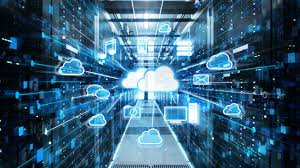
History of Computers:
- Early Developments: The concept of a mechanical computing device dates back to ancient times, with notable contributions from figures like Charles Babbage and Ada Lovelace in the 19th century.
- Electronic Computers: The mid-20th century saw the development of electronic computers, starting with machines like ENIAC (1946), which were huge and primarily used for scientific and military applications.
- Advancements: The evolution from vacuum tubes to transistors and integrated circuits (ICs) led to the miniaturization and increased computing power, culminating in the personal computer (PC) revolution from the 1970s onwards.
Components of Computers:
- Hardware Components:
- CPU (Central Processing Unit): Executes instructions and processes data.
- Memory (RAM): Temporarily stores data and instructions that the CPU needs while processing.
- Storage: Permanent storage for data and programs (e.g., hard drives, SSDs).
- Input Devices: Keyboards, mice, etc., for entering data.
- Output Devices: Monitors, printers, etc., for displaying or outputting data.
- Software Components:
- Operating System (OS): Manages hardware resources and provides common services for computer programs.
- Applications: Software programs that perform specific tasks (e.g., word processing, web browsing).
Uses of Computers:
- Personal Use: Communication (email, social media), entertainment (games, multimedia), education (online learning), productivity (word processing, spreadsheets).
- Business: Data management, accounting, customer relationship management (CRM), inventory management, communication (email, video conferencing).
- Scientific Research: Simulation, modeling, data analysis, and visualization.
- Industry: Automation of manufacturing processes (robotics), quality control, logistics management.
- Healthcare: Patient monitoring, medical imaging (MRI, CT scans), electronic health records (EHR).
How Computers Work:
- Input: Data and instructions are entered via input devices like keyboards and mice.
- Processing: The CPU executes instructions stored in memory, manipulating data as needed.
- Output: Results are displayed on output devices such as monitors or printed via printers.
- Storage: Data and programs are stored in secondary storage devices (e.g., hard drives, SSDs) for long-term retention.
Conclusion:
Computer fundamentals are essential for understanding how computers operate, their historical development, versatile uses across various domains, and the components that make up these machines. Continual advancements in technology ensure that computers remain integral to our daily lives and future innovations.



